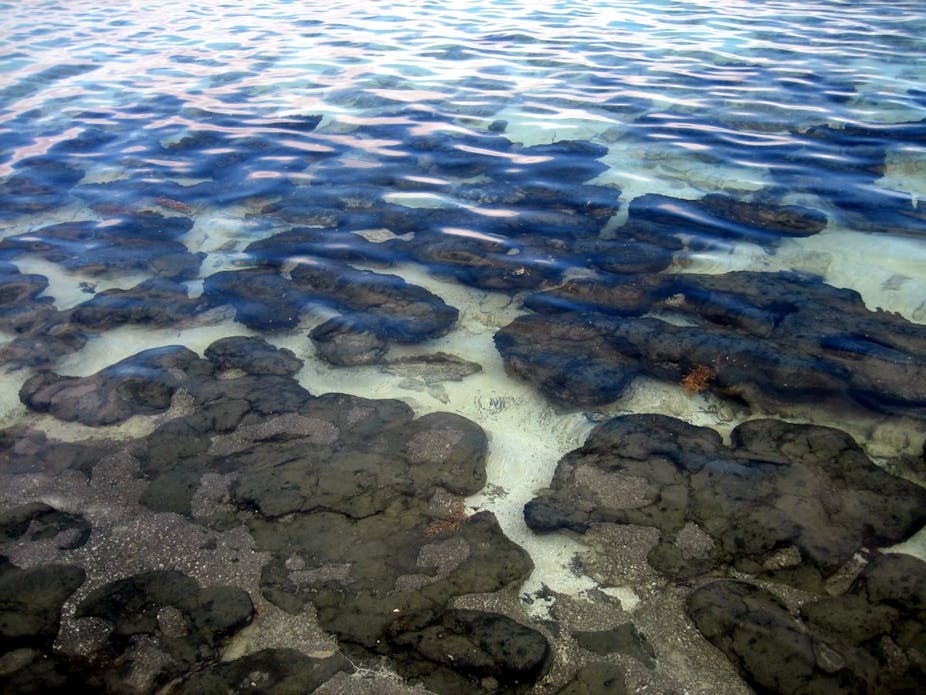Climate change – resulting in more frequent flooding of the Wooramel River that leads into Shark Bay – may threaten the unique stromatolites that make Shark Bay a World Heritage site. These stromatolites – rocky structures formed over millennia by blue-green algae or cyanobacteria – thrive in Shark Bay’s Hamelin Pool, where an unusual undersea landscape has created an environment twice as saline as normal seawater.
Shark Bay was added to the World Heritage List in 1991 because of these stromatolites. They are living examples of the most ancient records of life on Earth.
But climate change is disturbing the natural system. The Wooramel River, which flows into Hamelin Pool, has flooded three times in the last year, washing in a huge amount of sediment and damaging Shark Bay’s seagrass meadows. Usually the river only floods every eight years or so.

Climate change predictions for this region are poorly developed. Increases in sea level and declines in rainfall, accompanied by more frequent, intense flooding associated with tropical storms, have been proposed.
Marine scientists from the UWA Oceans Institute, Curtin University and the CSIRO are investigating how these disturbances affect Shark Bay’s World Heritage values. The research forms part of a Caring for Our Country project funded by the Australian Government to the Western Australian Marine Science Institution.
Surprisingly, it is the seagrass meadows in Shark Bay that are responsible for creating the unique salty conditions in Hamelin Pool that allow stromatolites to thrive.
Over the past 5000 years, seagrasses have collected sediment to build a barrier known as the Fauré Sill around the top of Hamelin Pool, limiting ocean circulation.
The trapped water inside the pool evaporates at a very high rate and – because it doesn’t mix well with the wider ocean – this water becomes extremely salty, nearly twice as salty as normal sea water.
With increased flooding events and more intensive floods in the watersheds of both the Wooramel and Gascoyne Rivers, the amount of sediment washing into Hamelin Pool is only expected to increase, which poses a major threat to the seagrasses.

The researchers have looked at growth rates and shoot lengths of seagrasses buried by sediment and found that they are significantly affected. A large area of defoliated seagrasses was observed on Wooramel Bank to the north-east of Hamelin Pool in both March and September 2011.
Similarly, flooding has increased nutrients in the tissues of both seagrass and algae. These increases may modify growth and dominance of seagrasses and algae over the Fauré Sill.
The current research will help marine scientists to understand how increased sediment input and changing ocean circulation patterns will affect the Fauré Sill ecosystem, and whether this will ultimately affect the stromatolites in Hamelin Pool.
Shark Bay is world-renowned for its high diversity of marine flora and fauna, and for its unique ecosystems. This research will help to confirm how climate change will affect these natural assets, and prepare adaptive strategies for managing this valuable resource.

